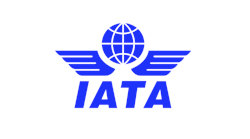It's an age-old question among us maintenance technicians, one that is yet to receive a clear, understandable answer from the FAA. I still remember the first time I raised the question to my chief inspector. At that time I was not interested in trying to find the answer in the regulations, I expected the chief inspector to be able to provide me with a quick response so that I could move on and get to the next task at hand (hoping the whole time for a minor repair). What I learned that day has remained the same to this day. The distinction between a major alteration and a minor alteration and the major repair and a minor repair is clouded by outdated regulations and guidance material.
Let's jump in with both feet. First of all, we need to understand the difference between a repair and an alteration. Although not specifically defined in the regulations, a repair is maintenance that takes place to restore a type-certificated product to "condition for safe operation." However, an alteration is maintenance that is performed that adds to and/or removes from the type-certificated product's configuration. So it is obvious to see that repairs and alterations make up the majority of what maintenance is performed on aircraft every day.
Next, let's try to understand the reason that we care about the difference between major and minor. For one thing, 14 CFR Part 43.9 in harmony with Appendix B to Part 43 mandates a different means of recording the maintenance when it is considered "major".
14CFR Part 43.9 (a)(4)
"If the work performed on the aircraft, airframe, aircraft engine, propeller, appliance, or component part has been performed satisfactorily, the signature, certificate number, and kind of certificate held by the person approving the work. The signature constitutes the approval for return to service only for the work performed. In addition to the entry required by this paragraph, major repairs and major alterations shall be entered on a form, and the form disposed of, in the manner prescribed in Appendix B, by the person performing the work."
14 CFR Part 43 Appendix B (a)
"(a) Except as provided in paragraphs (b), (c), and (d) of this appendix, each person performing a major repair or major alteration shall -
(1) Execute FAA Form 337 at least in duplicate;
(2) Give a signed copy of that form to the aircraft owner; and
(3) Forward a copy of that form to the local Flight Standards District Office within 48 hours after the aircraft, airframe, aircraft engine, propeller, or appliance is approved for return to service."
The next question to consider is who is it that has to make the decision whether the repair or alteration is major or minor. Well, this takes us back to the rule that requires execution of the FAA Form 337, 14 CFR Part 43.9.
14 CFR Part 43.9 (a) (4) (in part)
"...In addition to the entry required by this paragraph, major repairs and major alterations shall be entered on a form, and the form disposed of, in the manner prescribed in Appendix B, by the person performing the work."
You see, it is the person performing the work who makes the distinction. When the work is performed, the person performing that maintenance must decide whether or not a "form prescribed in Appendix B" must be utilized. Since the person who performs maintenance is the person who makes the distinction, it's only natural that we look to who can perform maintenance on aircraft in the first place and thus find out who is burdened with this heavy load. Look at 14 CFR Part 43.3.
43.3 Persons authorized to perform maintenance, preventive maintenance, rebuilding, and alterations
"(a) Except as provided in this section and § 43.17, no person may maintain, rebuild, alter, or perform preventive maintenance on an aircraft, airframe, aircraft engine, propeller, appliance, or component part to which this part applies. Those items, the performance of which is a major alteration, a major repair, or preventive maintenance, are listed in Appendix A.
(b) The holder of a mechanic certificate...
(c) The holder of a repairman certificate...
(d) A person working under the supervision of a holder of a mechanic or repairman certificate...
(e) The holder of a repair station certificate...
(f) The holder of an air carrier operating certificate or an operating certificate issued under Part 121 or 135...
(j) A manufacturer may -
(1) Rebuild or alter any aircraft, aircraft engine, propeller, or appliance manufactured by him under a type or production certificate..."
So, the person performing the maintenance is the one who decides if the repair or alteration is major or minor and that person could be a mechanic, a repairman (who, by the way, must be employed by a repair station), a person under the direct supervision of a mechanic or repairman, or a repair station. The manufacturer may only rebuild or alter the aircraft unless they are certificated as a repair station as well.
So now we know who is responsible to make the determination on whether a repair or alteration is major or minor. Great, but how will they decide?
The definitions regulation says this:
14 CFR Part 1.1
Major alteration means an alteration not listed in the aircraft, aircraft engine, or propeller specifications -
(1) That might appreciably affect weight, balance, structural strength, performance, powerplant operation, flight characteristics, or other qualities affecting airworthiness; or
(2) That is not done according to accepted practices or cannot be done by elementary operations.
Minor alteration means an alteration other than a major alteration.
Major repair means a repair:
(1) That, if improperly done, might appreciably affect weight, balance, structural strength, performance, powerplant operation, flight characteristics, or other qualities affecting airworthiness; or
(2) That is not done according to accepted practices or cannot be done by elementary operations.
Minor repair means a repair other than a major repair.
Not much help when we are considering a specific repair or alteration. As mentioned in 43.3 (a) above, Appendix A to Part 43 also provides us with a list of what is considered a major alteration or major repair. This list is a part of the regulations that is outdated and difficult at times to apply to a particular situation. I will not include all of the descriptions here but please take the time to pull out your Regulation Book and take a gander at the list.
When you look at the list you will find it obviously has not been revised significantly since its inception April 23, 1964. However, it remains as the list used to help us make the major/minor decision. Because of the subjectivity introduced here, it is far better to err on the safe side and execute the 337 when in doubt. That sounds simple enough but there is another big difference between a major repair/alteration and a minor repair/alteration. Major repairs or alterations must be performed in accordance with approved data.
Considering the difficulty we all face now in obtaining approved data either from the FAA or from manufacturers, many are tempted, when on the fence, to subjectively decide that the repair or alteration is minor and does not need a 337 or approved data. My advice? Don't take the risk. If the repair you are performing could be construed as major by the FAA or a future purchaser of the aircraft, figure out how to get the approved data.
There is one exception to the requirement for use of an FAA Form 337. It is found deeper into Appendix B (b) to Part 43.
"(b) For major repairs made in accordance with a manual or specifications acceptable to the Administrator, a certificated repair station may, in place of the requirements of paragraph (a) [FAA Form 337] -
(1) Use the customer's work order upon which the repair is recorded;
(2) Give the aircraft owner a signed copy of the work order and retain a duplicate copy for at least two years from the date of approval for return to service of the aircraft, airframe, aircraft engine, propeller, or appliance;
(3) Give the aircraft owner a maintenance release signed by an authorized representative of the repair station and incorporating the following information..."
I want to point out one important detail about this exception. This one exception to the requirement to use an FAA Form 337 applies to major repairs only. That being said, if the entity performing the work is a repair station certificated under Part 145 it may elect to provide the aircraft owner or operator a signed copy of the work order in place of the Form 337. It is critically important though, to understand the limitations behind this exception. It is not real clear in the appendix. Regardless of how the major repair is approved for return to service, whether it be by use of the Form 337 or a signed copy of the work order, the work must be performed in accordance with approved data. Take a look at Part 65.
65.95 Inspection authorization: Privileges and limitations
"(a) The holder of an inspection authorization may -
(1) Inspect and approve for return to service any aircraft or related part or appliance (except any aircraft maintained in accordance with a continuous airworthiness program under Part 121 of this chapter) after a major repair or major alteration to it in accordance with Part 43 of this chapter, if the work was done in accordance with technical data approved by the Administrator..."
145.201 Privileges of certificates
"(c) A certificated repair station may not approve for return to service:
(2) Any article after a major repair or major alteration unless the major repair or major alteration was performed in accordance with applicable approved technical data."
There is a misleading statement in the appendix that begs a question. Notice it states, "For major repairs made in accordance with a manual or specifications acceptable to the Administrator, a certificated repair station may..." I have several times approached the FAA with this statement to justify the use of data that has not yet been approved and found in all cases, that is not the intent. Look again at 14 CFR Part 145.201:
145.201 Privileges of certificates
"(c) A certificated repair station may not approve for return to service:
(2) Any article after a major repair or major alteration unless the major repair or major alteration was performed in accordance with applicable approved technical data."
Clearly, a repair station must use approved data for major repairs even when it elects to approve for return to service in accordance with 14 CFR Part 43 Appendix B (b).
I believe the intent of this statement stems from this. Back when this old rule was written, approved data for repairs was rare and the common practice was to use AC 43.13-1A as data to support the repair. You may be surprised to find out that you can still use AC 43.13-1B (revised about five years ago) as approved data for major repairs.
AC43.13-1B Introduction
1. PURPOSE.
"This advisory circular (AC) contains methods, techniques, and practices acceptable to the Administrator for the inspection and repair of nonpressurized areas of civil aircraft, only when there are no manufacturer repair or maintenance instructions. This data generally pertains to minor repairs. The repairs identified in this AC may also be used as a basis for FAA approval for major repairs. The repair data may also be used as approved data, and the AC chapter, page, and paragraph listed in block 8 of FAA Form 337 when:
- The user has determined that it is appropriate to the product being repaired;
- It is directly applicable to the repair being made; and
- It is not contrary to manufacturer's data."
I believe this is why Appendix B uses the term accepted rather than approved. What I see as another opportunity for revision. The AC is simply acceptable data and can only be used as approved data under these clearly defined conditions.
So there you have it. The person performing the work is to determine whether or not the alteration or repair is major in nature using 14 CFR Part 43 Appendix A as a guide. Once that has been decided, if it is major, the work must be performed in accordance with FAA approved data and the person performing the work must execute an FAA Form 337 as defined by 14 CFR Part 43 Appendix B (a). A repair station may provide the owner or operator with a signed copy of the work order as detailed in 14 CFR Part 43 Appendix B (b). Develop for yourself clear boundaries around Part 43 Appendix A so that you will not find yourself on the fence when deciding between major and minor. AMT




